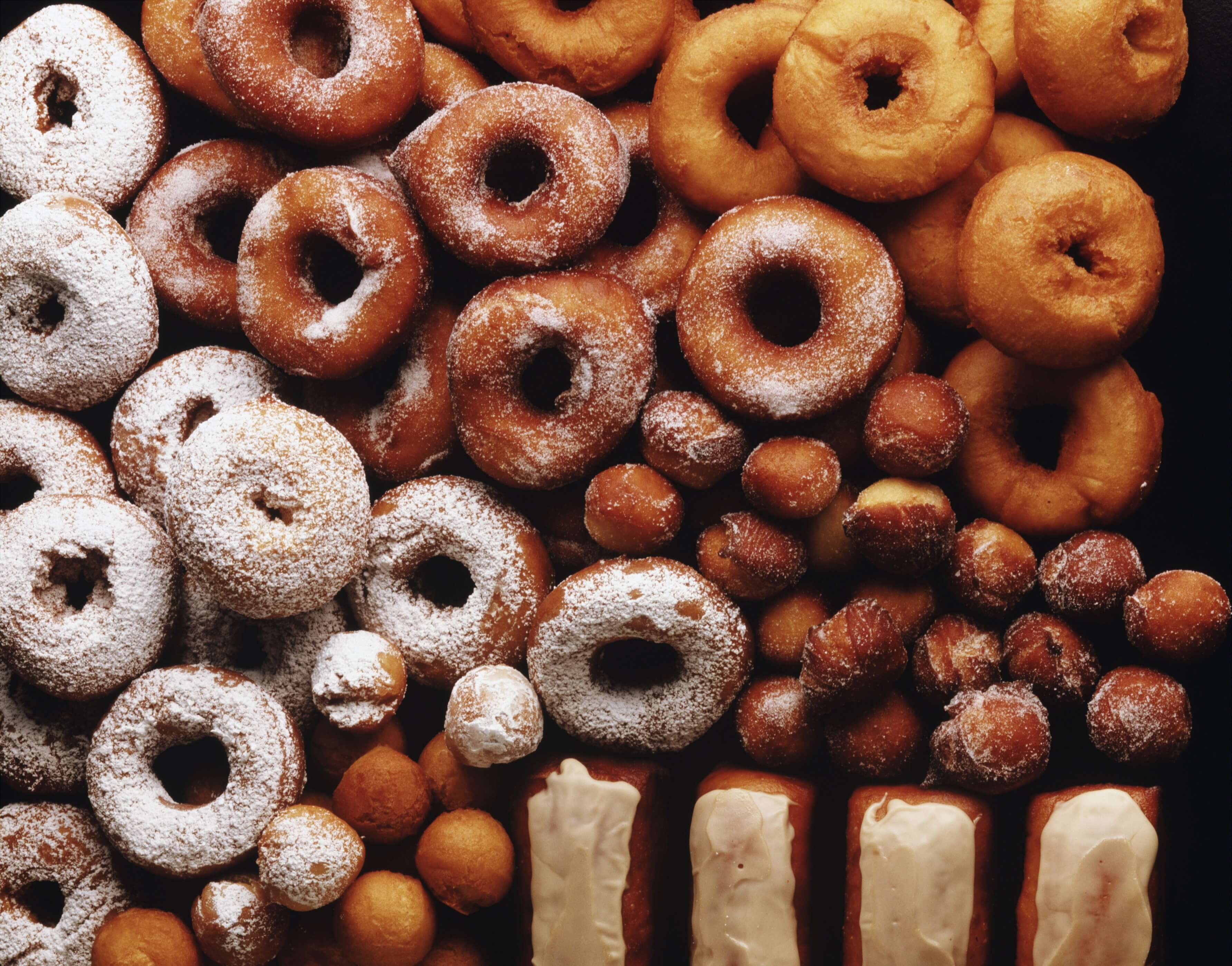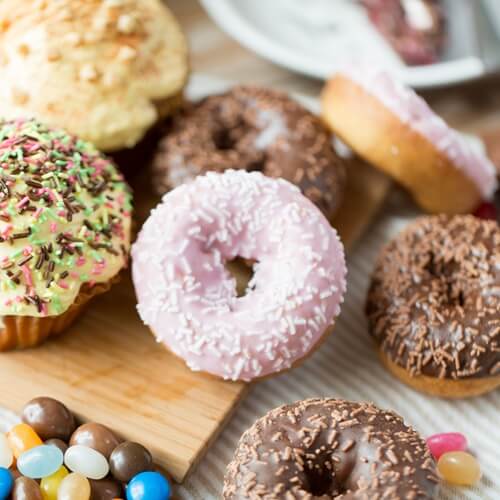Make the Best Doughnuts

When it comes to most baked goods, there aren’t many options that beat homemade. While you may have mastered cookies, cakes and other delectable pastries in your baking courses online, you may still be hesitant to try making your own doughnuts. Between the rising yeast and the deep frying, the idea can be intimidating! However, with a few pointers, you’ll be giving store- and bakery-bought doughnuts a run for their money.
Types of doughnuts
There are dozens of varieties of doughnuts, but all of these types of doughnuts tend to fall into one of three categories:
- Yeast: Yeast doughnuts are made with yeasted dough. There isn’t usually very much sugar in yeasted dough, so most of the sweetness comes from a filling, glaze or other sort of topping. Twisted and jelly- or cream-filled doughnuts are usually yeast-based. This type of doughnut is always deep fried.
- Cake: The dough used to make cake doughnuts rises with baking soda or powder instead of yeast. They can be deep fried, but cake doughnuts can be baked as well. Cider and old-fashioned doughnuts are made with cake batter and tend to have a crispy outer texture when they’re freshly baked.
- Cruller: American crullers are long instead of round and tend to be made with a cake batter. However, French crullers are completely different. These fancy doughnuts are made with choux pastry instead of yeast or cake dough, which allows the twisted doughnuts to be gooey on the inside but crispy on the outside.
Caring for the dough
Like most baked goods, how well your doughnuts turn out can be determined pretty early on because how the dough is prepared can make or break it. According to Food 52, whether you’re making cake or yeast doughnuts, it’s important to mix the dough carefully. Mix yeast doughnuts on the lowest speed at first, and then step it up to medium. For cake doughnuts, mix as little as possible.
Food 52 also stressed the importance of allowing your yeast doughnuts ample time to rise. After your dough has been mixed, allow it to sit and rise for an hour or two. Do the same for about a half hour after you’ve shaped it into individual rings. Don’t rush this process – the doughnuts will be worth the wait!

Frying
If you choose to fry your doughnuts instead of bake them, be sure to use an oil that doesn’t have a whole lot of flavor on its own. You don’t want it to affect the taste of the dough too much. Many people opt for a pot with about three inches of oil in it on the stove instead of a deep fryer. Pay close attention to the doughnuts as they cook to ensure they don’t burn. This usually takes between one and two minutes, according to First We Feast, but it’s important to watch them and remove them with tongs or a slotted spoon. Let your doughnuts drain on a cooling rack with paper towel beneath it to keep your counter from getting too greasy.
Decorating
When it comes to cake doughnuts, plain ones can be just as satisfying as flavored. Yeast doughnuts, on the other hand, typically require some sort of topping or filling in order to really enhance it. The possibilities are endless. Some of the most common decorations include:
- Dry toppings: When your doughnuts are still a bit wet from the oil, dip them into a bowl of powdered sugar, cinnamon sugar, nuts or toasted coconut.
- Fillings: Pudding, jelly and custard all taste delicious in a yeast doughnut. To add a filling, simply put the it in a pastry bag, cut a hole in the doughnut and squeeze as much as you want into the pastry.
- Glaze: A classic glaze is just made of powdered sugar and milk or cream, but you can add any other flavors, like melted chocolate, peanut butter or even mint. Simply allow your doughnuts to cool a bit and spread the glaze on with a pastry brush.


